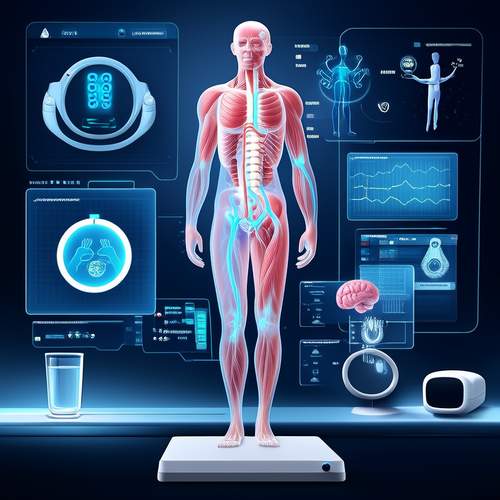Resistance training is a cornerstone of fitness, and understanding the concept of Repetition Maximum (RM) is crucial for designing effective workout programs. The RM value refers to the maximum number of repetitions one can perform with a given weight before muscle failure occurs. This metric is not just a number—it’s a powerful tool that informs intensity, progression, and individualization in training. Whether you’re an athlete, a bodybuilder, or someone looking to improve general fitness, grasping the nuances of RM can elevate your training outcomes.
The Science Behind RM Values
At its core, the RM value is rooted in exercise physiology. When you lift a weight, your muscles contract to overcome the resistance. The RM represents the point at which your muscles can no longer perform another repetition with proper form. For example, a 1RM is the heaviest weight you can lift for one full repetition, while a 10RM is the maximum weight you can lift for ten consecutive reps. These values are not static; they fluctuate based on factors like fatigue, nutrition, and training adaptations. By regularly testing RM, you can track progress and adjust your program to ensure continuous improvement.
Why RM Matters in Program Design
Training intensity is often prescribed as a percentage of one’s RM. For instance, lifting at 85% of your 1RM typically falls in the strength-building range, while 60-70% of 1RM is more suited for hypertrophy. Without knowing your RM, you’re essentially guessing at the appropriate weight to use. This can lead to suboptimal results or even injury. A well-structured program leverages RM values to periodize training, alternating between phases of strength, endurance, and recovery. It’s the difference between random lifting and a strategic, goal-oriented approach.
Practical Applications for Different Goals
If your aim is maximal strength, your training will revolve around lower rep ranges (1-5RM) with heavier weights. Powerlifters, for example, frequently test their 1RM to gauge progress. On the other hand, bodybuilders often work in moderate rep ranges (6-12RM) to maximize muscle growth. Endurance athletes might focus on higher rep ranges (15+RM) with lighter weights to enhance muscular stamina. The beauty of RM-based training lies in its adaptability—it can be tailored to suit any objective, provided the RM is accurately assessed and applied.
Common Misconceptions and Pitfalls
One of the biggest mistakes is assuming that RM values are fixed. They can vary from exercise to exercise; your 5RM for squats won’t necessarily match your 5RM for bench press. Another misconception is neglecting proper form in pursuit of hitting a target RM. Sacrificing technique for the sake of completing reps undermines the purpose of RM-based training and increases injury risk. Additionally, some trainees overlook the importance of rest and recovery, which are essential for RM improvements. Overtraining can lead to stagnation or regression in RM values.
How to Safely Test Your RM
Testing your RM requires caution. For beginners, it’s advisable to work with a qualified trainer to ensure safety. A general approach involves warming up thoroughly, then gradually increasing the weight until you reach a load that allows only the desired number of reps. For higher RM values (e.g., 10RM), you might need fewer warm-up sets compared to testing a 1RM. It’s also wise to avoid testing multiple RMs in a single session to prevent excessive fatigue. Remember, RM testing is demanding on the nervous system and muscles, so it should be done sparingly—typically every 4-6 weeks.
Beyond the Numbers: Listening to Your Body
While RM values provide a quantitative measure of strength, they shouldn’t overshadow qualitative feedback from your body. Factors like joint pain, energy levels, and overall fatigue can influence your performance on any given day. If you’re feeling unusually drained, it might be better to postpone RM testing or adjust your training load. The goal is to use RM as a guide, not a rigid rule. Balancing data-driven decisions with intuitive training ensures long-term progress and sustainability.
The Role of RM in Progressive Overload
Progressive overload—the gradual increase of stress placed on the body—is fundamental to muscle growth and strength gains. RM values serve as benchmarks for applying this principle. For example, once you can perform more reps than your target RM at a given weight, it’s a sign to increase the load. This systematic approach prevents plateaus and keeps the body adapting. However, progression doesn’t always mean lifting heavier; it can also involve improving technique, increasing reps, or reducing rest periods. RM-based training keeps the focus on measurable progress.
Final Thoughts: Integrating RM into Your Routine
Understanding and applying RM values can transform your resistance training from guesswork to precision. Start by identifying your goals, then determine the appropriate RM range to target. Regularly reassess your RM to track progress and adjust your program accordingly. Most importantly, respect the process—strength and muscle gains take time. By leveraging RM values intelligently, you’ll not only optimize your workouts but also minimize the risk of injury, ensuring a sustainable and rewarding fitness journey.

By /May 21, 2025

By /May 21, 2025

By /May 21, 2025

By /May 21, 2025

By /May 21, 2025

By /May 21, 2025

By /May 21, 2025

By /May 21, 2025

By /May 21, 2025

By /May 21, 2025

By /May 21, 2025

By /May 21, 2025

By /May 21, 2025

By /May 21, 2025

By /May 21, 2025

By /May 21, 2025

By /May 21, 2025

By /May 21, 2025

By /May 21, 2025

By /May 21, 2025